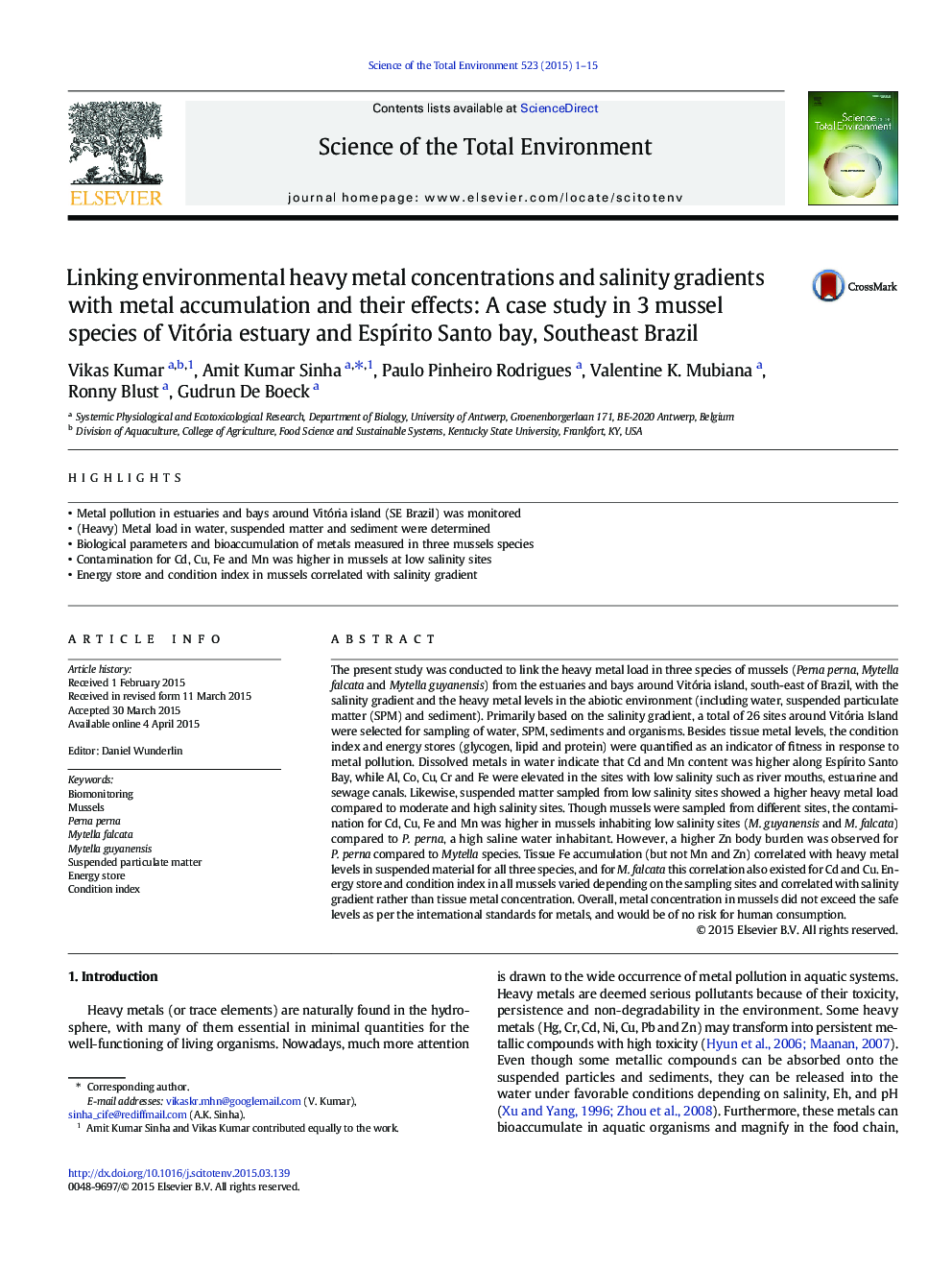| Article ID | Journal | Published Year | Pages | File Type |
|---|---|---|---|---|
| 4428387 | Science of The Total Environment | 2015 | 15 Pages |
•Metal pollution in estuaries and bays around Vitória island (SE Brazil) was monitored•(Heavy) Metal load in water, suspended matter and sediment were determined•Biological parameters and bioaccumulation of metals measured in three mussels species•Contamination for Cd, Cu, Fe and Mn was higher in mussels at low salinity sites•Energy store and condition index in mussels correlated with salinity gradient
The present study was conducted to link the heavy metal load in three species of mussels (Perna perna, Mytella falcata and Mytella guyanensis) from the estuaries and bays around Vitória island, south-east of Brazil, with the salinity gradient and the heavy metal levels in the abiotic environment (including water, suspended particulate matter (SPM) and sediment). Primarily based on the salinity gradient, a total of 26 sites around Vitória Island were selected for sampling of water, SPM, sediments and organisms. Besides tissue metal levels, the condition index and energy stores (glycogen, lipid and protein) were quantified as an indicator of fitness in response to metal pollution. Dissolved metals in water indicate that Cd and Mn content was higher along Espírito Santo Bay, while Al, Co, Cu, Cr and Fe were elevated in the sites with low salinity such as river mouths, estuarine and sewage canals. Likewise, suspended matter sampled from low salinity sites showed a higher heavy metal load compared to moderate and high salinity sites. Though mussels were sampled from different sites, the contamination for Cd, Cu, Fe and Mn was higher in mussels inhabiting low salinity sites (M. guyanensis and M. falcata) compared to P. perna, a high saline water inhabitant. However, a higher Zn body burden was observed for P. perna compared to Mytella species. Tissue Fe accumulation (but not Mn and Zn) correlated with heavy metal levels in suspended material for all three species, and for M. falcata this correlation also existed for Cd and Cu. Energy store and condition index in all mussels varied depending on the sampling sites and correlated with salinity gradient rather than tissue metal concentration. Overall, metal concentration in mussels did not exceed the safe levels as per the international standards for metals, and would be of no risk for human consumption.
